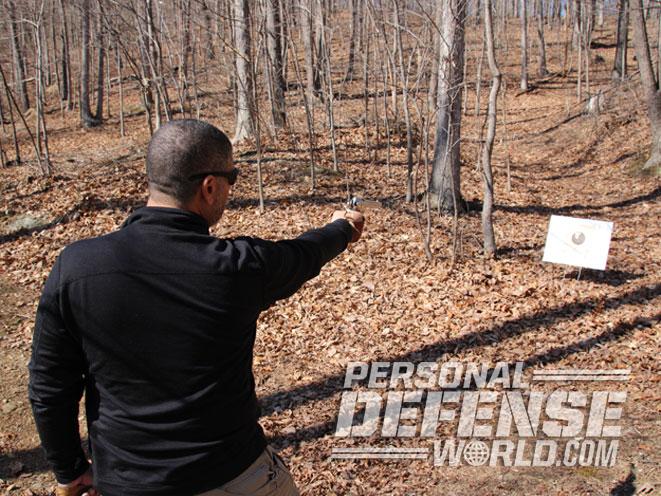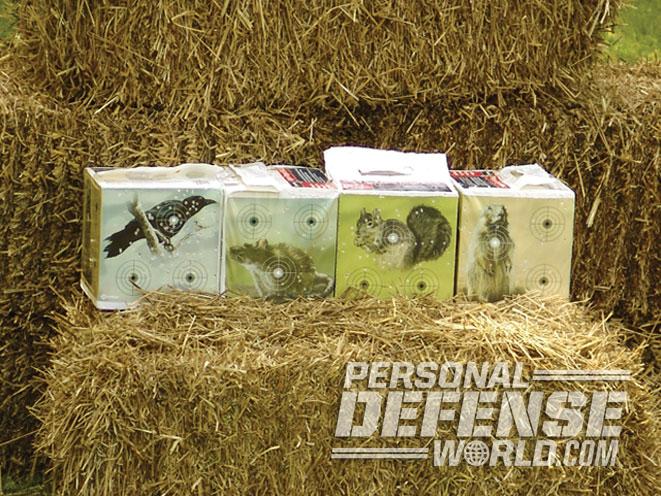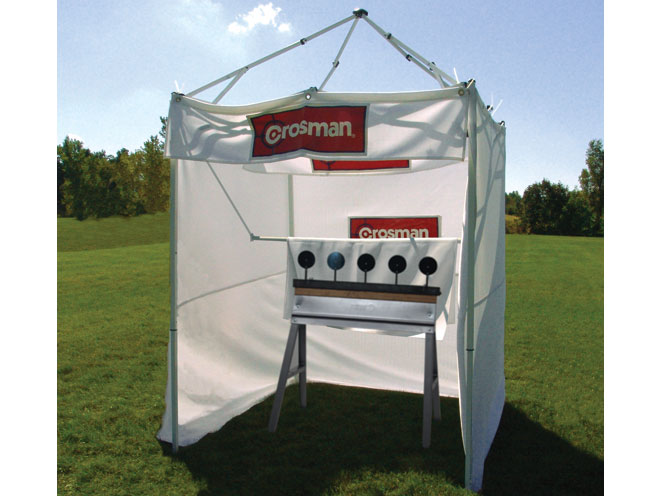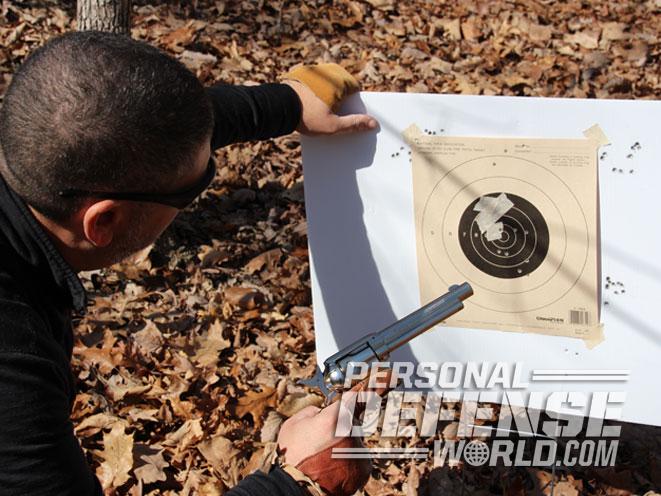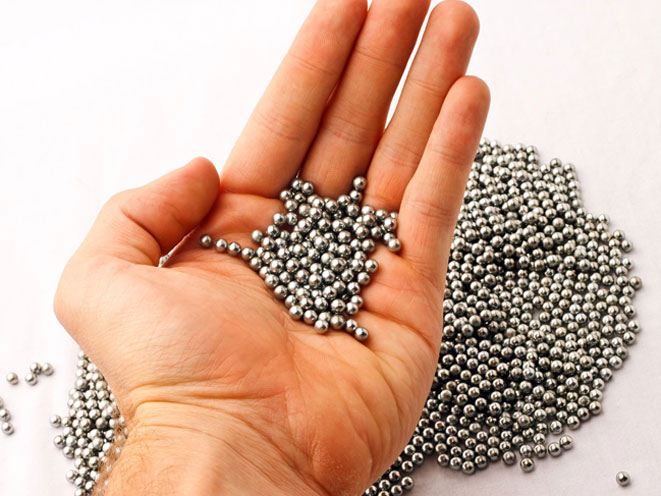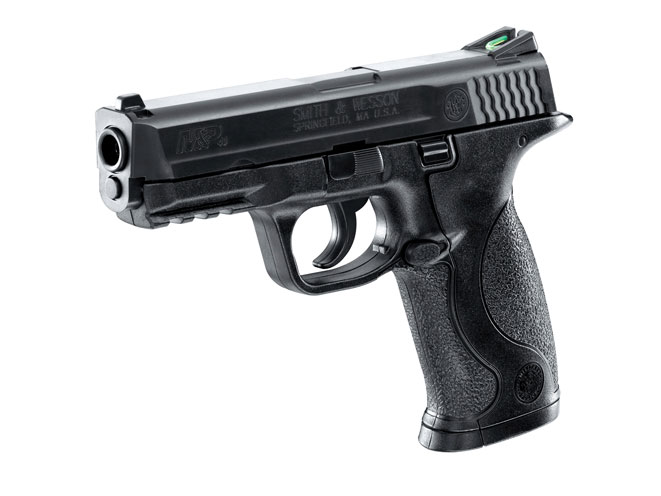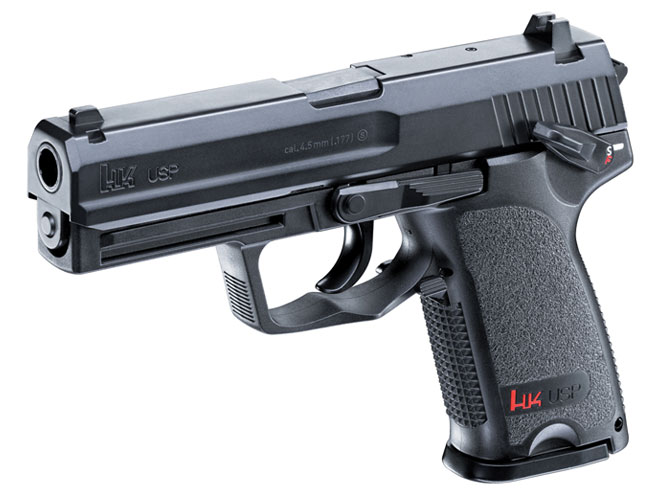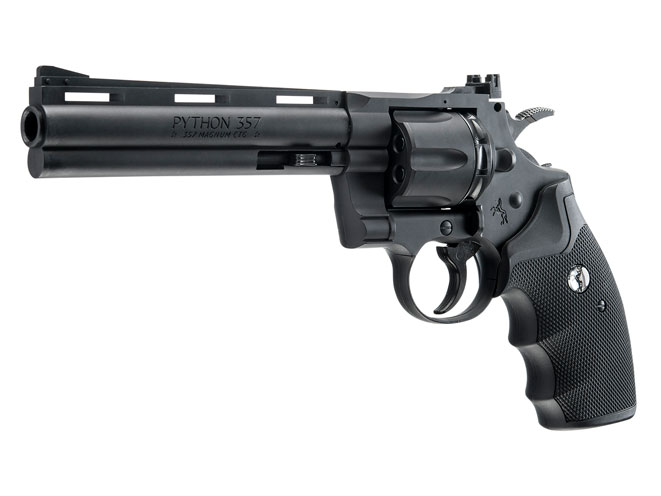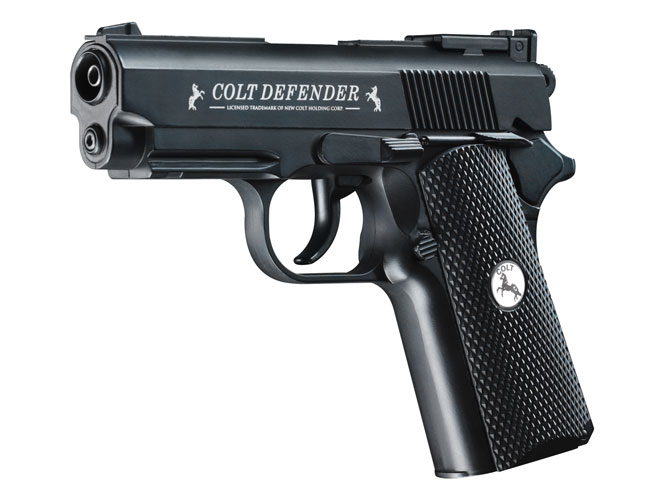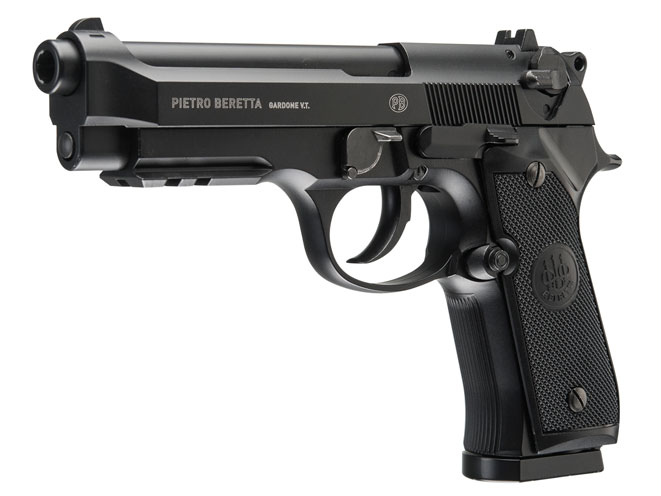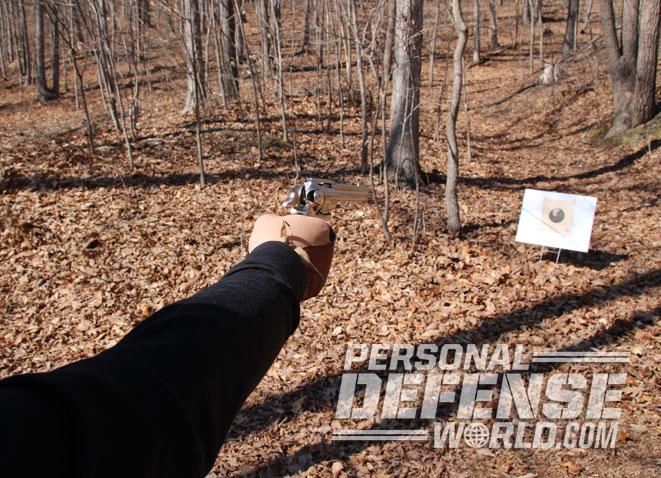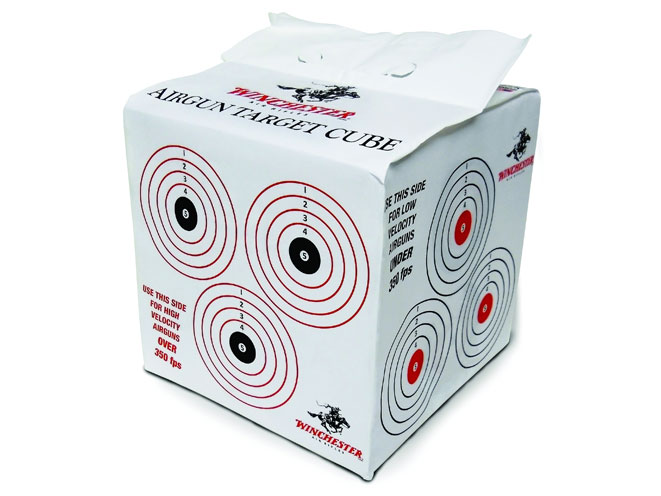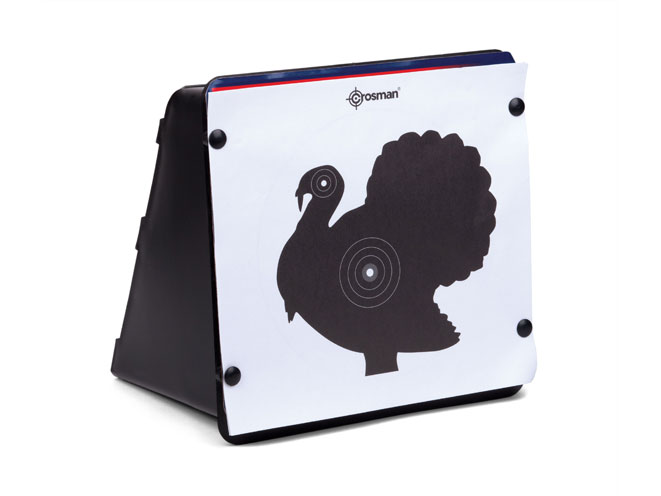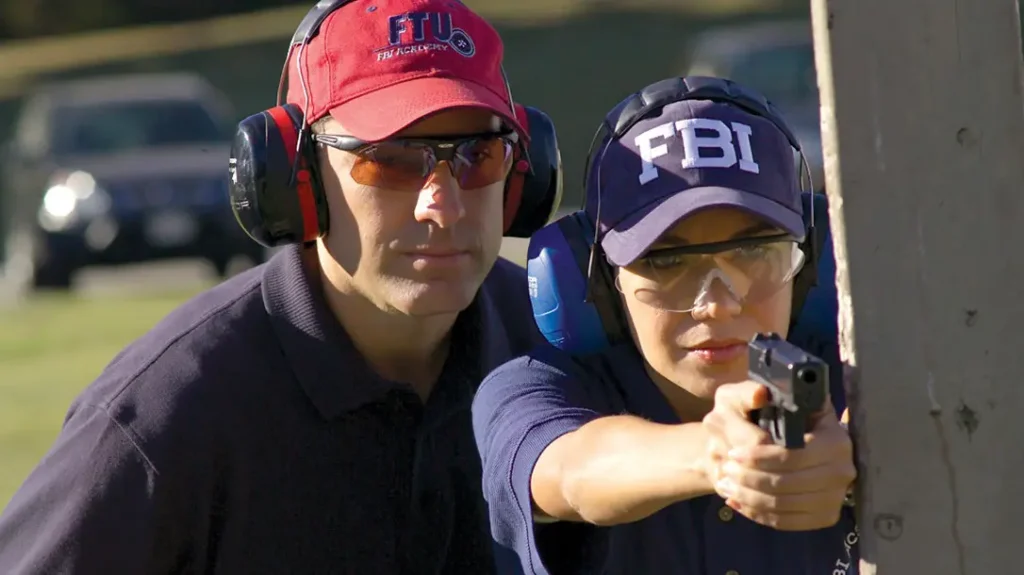Have you seen the price of ammunition lately? While it’s available, it certainly isn’t getting any cheaper. If you are serious about your handgun training, you also need to add the cost of gas and range fees to the equation, not to mention the time it takes to get to the range. Fortunately, there is a form of cheap and easy practice you can do at home, and I’m not talking about dry firing.
Training with airguns has become an increasingly viable alternative to improve your skills, and it is something you can easily do at home. New airguns from companies like Umarex are fully licensed replicas of the most popular duty and civilian handguns on the market today. They not only look real, but they also typically offer the same size, dimensions and weight. This also allows the shooter to train using their standard carry holster.

To further increase realism and the overall training value, many of these modern air pistols have at least some of the functional controls of the actual firearm, and even when they don’t, the controls are there in appearance and you can still train with them. The most realistic and fully functional airgun I have seen is the Umarex Colt Single Action Army Peacemaker revolver, which has all of the functional controls of the actual firearm. This particular all-metal revolver makes a great training aid for fans of Cowboy Action Shooting. Daisy also produces a Winchester-licensed 1911-style pistol with real blowback operation, a removable magazine and an action that locks the slide open on the last round.
Advertisement — Continue Reading Below
Safe Training

Of course, having the right air gun is only part of what you need to train—you also need a place to safely shoot it. Most CO2-powered air guns max out at 400 to 425 fps and you don’t need too much to safely stop their projectiles, although it should be noted that these are not toys and can be very dangerous. All of the same precautions taken with actual firearms still apply. Eye protection is especially important for everyone on the range, including non-shooters, because of the propensity for BBs to ricochet.
If you are going to shoot indoors or in your yard, make sure of several important factors. First and foremost, identify a safe direction to fire. You need to know where you are shooting and what is beyond that. If you are shooting inside, stick with paper targets. Cans, plastic bottles, spinners, clays and other reactive targets will make a mess and have a higher likelihood of causing a ricochet.
Advertisement — Continue Reading Below
RELATED STORY: 7 Compact Replica Air Pistols by Umarex
The National Rifle Association Home Air Gun Program has an excellent manual available online that describes NRA airgun training and includes an entire chapter on building your own airgun range for plinking as well as formal competition. The first item they mention is legality. Even if it is legal for you to own an airgun (and laws vary from state to state and locality to locality), it may not be legal for you to fire it outside a formal range. Check the laws before building yourself what may be an unusable range.
Like any range, you would not want people accidentally wandering downrange where they could get injured. Ideally, your range will only have one point of access. This is easier in a fenced yard or in one room of your home. If you are shooting outside, cautionary signage can help as well to warn anyone who wanders by.
Advertisement — Continue Reading Below
Shooting lead pellets carries it own risks, especially indoors. As long as you keep the velocities below about 600 fps, the pellet will not break apart. As always, make sure to wash your hands after handling lead, and of course make sure that if you drop lead pellets to pick them up rather than leave them behind for little hands to find later.
Target Zone

Another concern is, whether we like to admit it or not, even the best shooter will occasionally miss the target. Having a good backstop will ensure you don’t end up with a bunch of holes in your drywall and will help minimize the chances of a ricochet. One of the best backstops is to use a loose-hanging heavy blanket or tarp behind your target. This will easily stop any escaping BBs or pellets, especially at air pistol velocities. Another option is to use a large sheet of plywood behind your target, but make sure to angle it downwards.
Advertisement — Continue Reading Below
RELATED STORY: 16 Air Guns to Keep Your Skills Polished and Your Training Cheap
Dirt makes a great backstop, and fortunately for us it’s generally cheap and plentiful. It won’t do you much good on the ground, however, unless it is in the form of a berm or incline. If you do have a hill or berm to shoot into, make sure it is clear of large rocks or debris that could cause a ricochet. This is less likely with pellets but it happens a lot with BBs. Never shoot at a hard surface with a BB, including trees, as it could bounce back toward you.
If you don’t want to move mounds of dirt, an easier alternative is to use hay bales. Stack them two bales deep and staggered so that there is less chance of a projectile getting through. For an indoor range, there are plenty of plans online for building pellet and BB traps, but almost all of these involve more mental acuity and manual dexterity than I possess. I have found that the absolute simplest solution is to get a medium-sized cardboard box and fill it with old newspapers. At the back I will also place a few old phone books for added safety.
Advertisement — Continue Reading Below

There are also plenty of commercial pellet and BB traps available (BBs and pellets should not be reused as this may damage your airgun). Metal traps should only be used with pellets. Daisy and Crosman both offer some easy-to-use and transport pellet traps that allow you to place your target in front and safely contain your fired pellets. If you want to change the target height, you can use hay bales, cardboard boxes or old milk crates. Make sure to read the caveats for each pellet trap since some are rated with a maximum pellet velocity. High-density foam target blocks are another commercially available alternative and will stop BBs.
RELATED STORY: Everyday Carry Training With 1911-Style Air Pistols
In terms of reactive targets, Daisy makes clay orange disks with target stands as well as an oozing “melon” and aluminum cans (for outdoor use). I always like to shoot empty plastic water bottles (don’t use a really heavy one, as these may cause ricochets) and aluminum cans. If you don’t want to spend half your time setting the cans back up, try tying them to a string and securing the string between two posts for a fun swinging target that resets itself.
Advertisement — Continue Reading Below
Shooting outside offers far greater versatility but comes with its own caveats. One of my top concerns when shooting outside is that my neighbors not be able to see me. Make sure to set up your backyard range someplace inconspicuous so as not to cause alarm or create sources for complaints. As they say, high fences make for good neighbors.
Better CCW
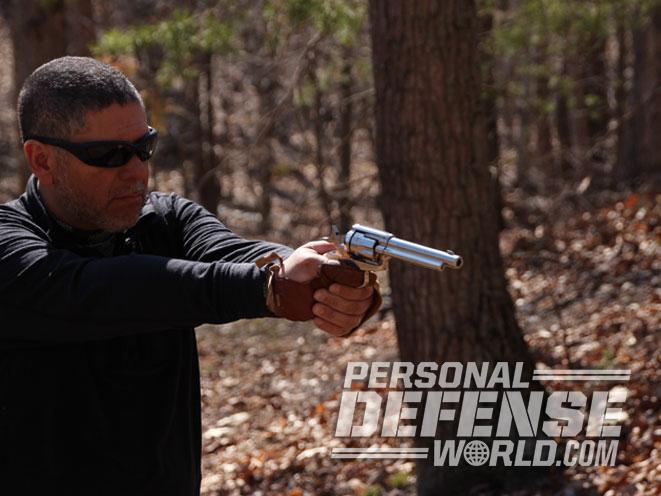
Advertisement — Continue Reading Below
Once you have your range set up, it is important to become familiarized with your airgun. Although many feel and function very much like your firearm, there may be differences, and it is important to understand these. The lack of recoil will help improve your trigger squeeze (just like dry firing does) and help you conquer any tendency to jerk the trigger or anticipate the shot. The lack of noise makes for very comfortable shooting as well.
RELATED STORY: 10 Backyard Airguns & Practical BB Guns
Given the full-sized dimensions and weights of most airguns, it is easy to incorporate holster use with these air pistols; you can train to draw from the holster and engage reactive or paper targets quickly. One important lesson when working with speed is that it is important to get your gun out of the holster fast, but it is not important to reholster fast. Reholstering should be done slowly and deliberately with a handgun. Since you only reholster when the danger has passed, there is no need to set speed records doing this, and if you go too quickly you are far more likely to end up with an obstruction in the trigger and an errant shot.
Advertisement — Continue Reading Below
A lot of the concealed-carry drills that you may not be able to practice at your local range will become options in your back yard. This includes en-gaging targets from awkward positions, training with cross-draw, purse or shoulder holsters and incorporating movement drills into your shooting. With your own private, easy-to-set-up and safe range, your training opportunities will increase exponentially and you will see results downrange with your firearm as well.
FOR MORE INFORMATION
Daisy
http://www.daisy.com
NRA Home Air Gun Program
http://youth.nra.org
Umarex USA
http://www.umarexusa.com
